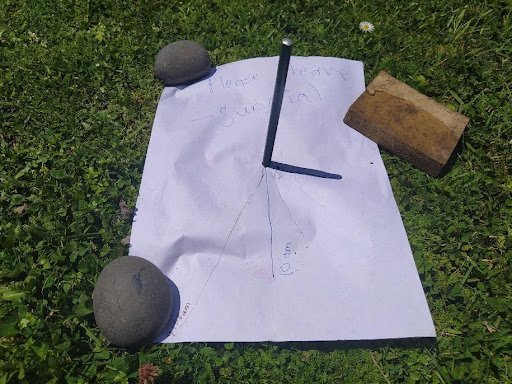Oct 8: Make a Weaving Loom
Make a weaving loom.

Below are some talking points and activities to pass the time, all relating to today’s story.
Talking points
Discuss the ideas presented in the story with your family—at home or over video conferencing. Find ways to involve as many people as possible, especially those who you know are isolated by the lock-down.
- In this article we learn about kuta, the lake and wetland sedge that is used for fine, soft weaving; it was “traditionally woven into soft mats, cloaks and rain capes.” Have you heard of kuta before? Are you surprised to learn that raincoats are not just a modern invention?
- “For Hooper, lake restoration can never be just ecological; it must be cultural, too. “It’s not just about the lake. We’re rebuilding our people at the same time. Right now, I’m training some of our young people in how to build fences and do riparian planting. It’s all te ao Māori.”” Looking at the pictures of people, can you explain what looks like “growing” or “learning” or “rebuilding?”
- One of the pictures is of a juvenile common bully hovering above some sunglasses in a “charophyte meadow” on the bed of one of the Kai Iwi lakes. The word “meadow” is not a word most of us would associate with a lake. How does it change your understanding of the lake ecosystem? What changes might have occurred since 2016, when powerboats were banned?
- On “Get to Know Your Dune Lake” days, educator Joanne Murray takes rangatahi to harvest kuta and make rain capes and give them away as gifts; waiata with links between lakes and local marae have been written, and people learn hands-on about the insects and other species in the lake. Do you think these activities are likely to make people feel more connected to the dune lakes? What knock-on effects might come from any feelings of connection?
- “Ngāti Kuri has existed for close to a thousand years…Petera says the iwi has decided it must have a thousand-year vision.” How would our decisions about what we do with and on land look different if we had a thousand-year vision like Ngāti Kuri? Do you feel inspired, or cynical, or confronted by the idea of a thousand-year vision for nature?
Activity: Make a Weaving Loom
Kuta has been woven for capes, soft mats and cloaks. Weaving is a soothing and tactile activity that you will have a great time exploring! Make your own weaving loom and weave with wool or any other weaving material to create a unique piece of art.
You will need:
- A sturdy piece of cardboard of any size, such as from the end of a pad of paper or cut from a box.
- Scissors
- A ruler
- A pencil
- Ice-block stick
- Wool or anything you would like to weave with – ribbons, fabric strips, harakeke etc

Step One: Cut out a piece of cardboard in a rectangle. About 100mm x120mm is a manageable size. Using a ruler, mark in notches at 1cm intervals along the short sides. Use scissors to cut a slit, about 5mm, into these notches.

Step Two: Knot the end of a length of wool and wedge the knot in behind the first slit at one end of the cardboard. Pass the wool down to the corresponding slit on the opposite end and bring the wool up the back of the cardboard to come into the second slit. Repeat this until you have a ‘warp’ across the loom. Tie a knot behind the last slit to secure it.

Step Three: Wrap an ice-block stick with wool. Leaving a 100mm tail, pass the ice-block stick under and over the warp threads until you get to the end then wrap it around the last warp to come over and under in the other direction. Keep weaving in this way. Push the weave closer together once in a while. You can cut the wool and tie on a new colour as you want to.

Step Four: When you are about 20mm from the end of the loom, turn it over and cut through the warp halfway. Remove the warp threads from the slits. Tie them in pairs to ensure the weaving doesn’t come undone. If you want to, you can tie one end to a twig to make a cute piece of hanging art.

















